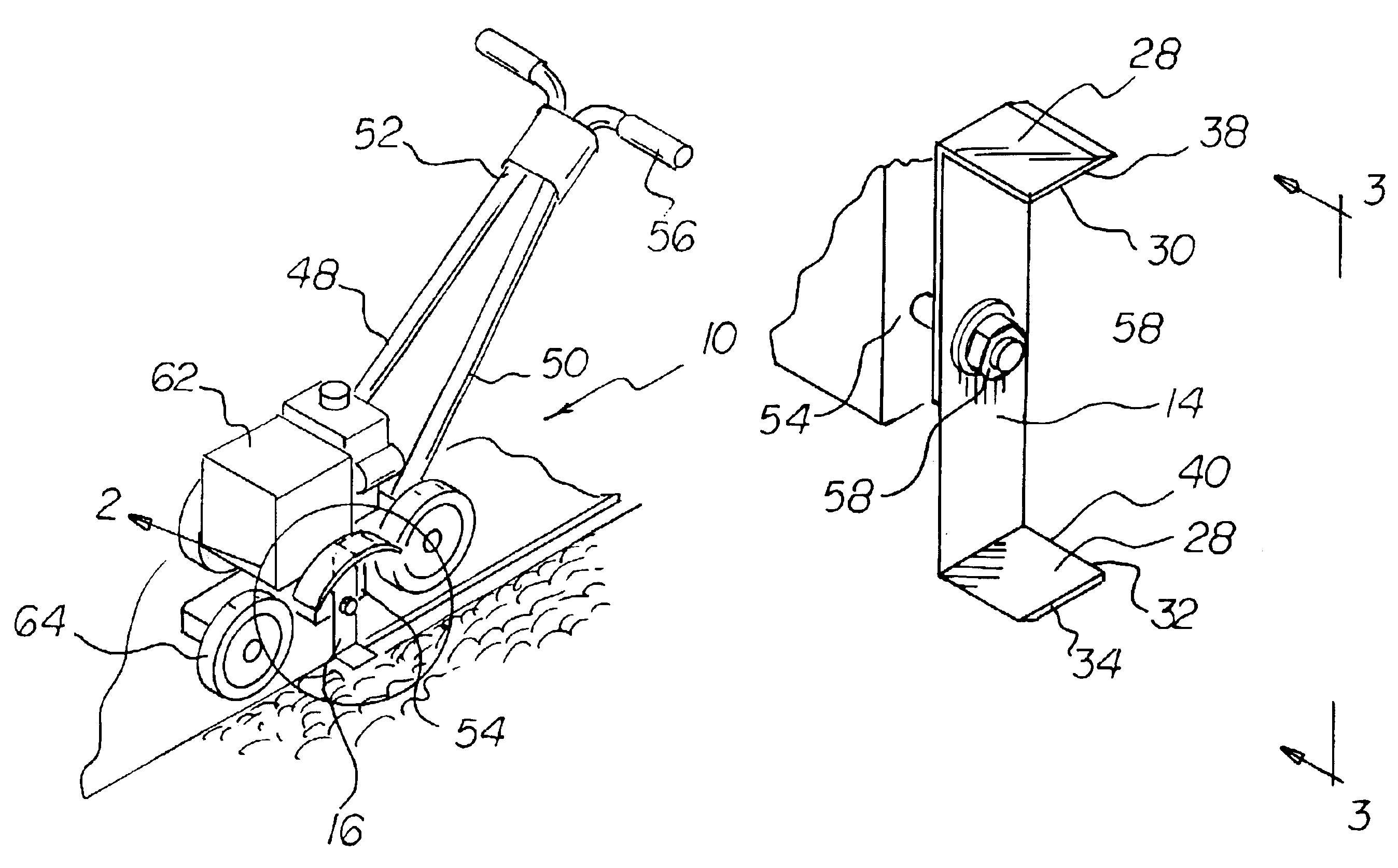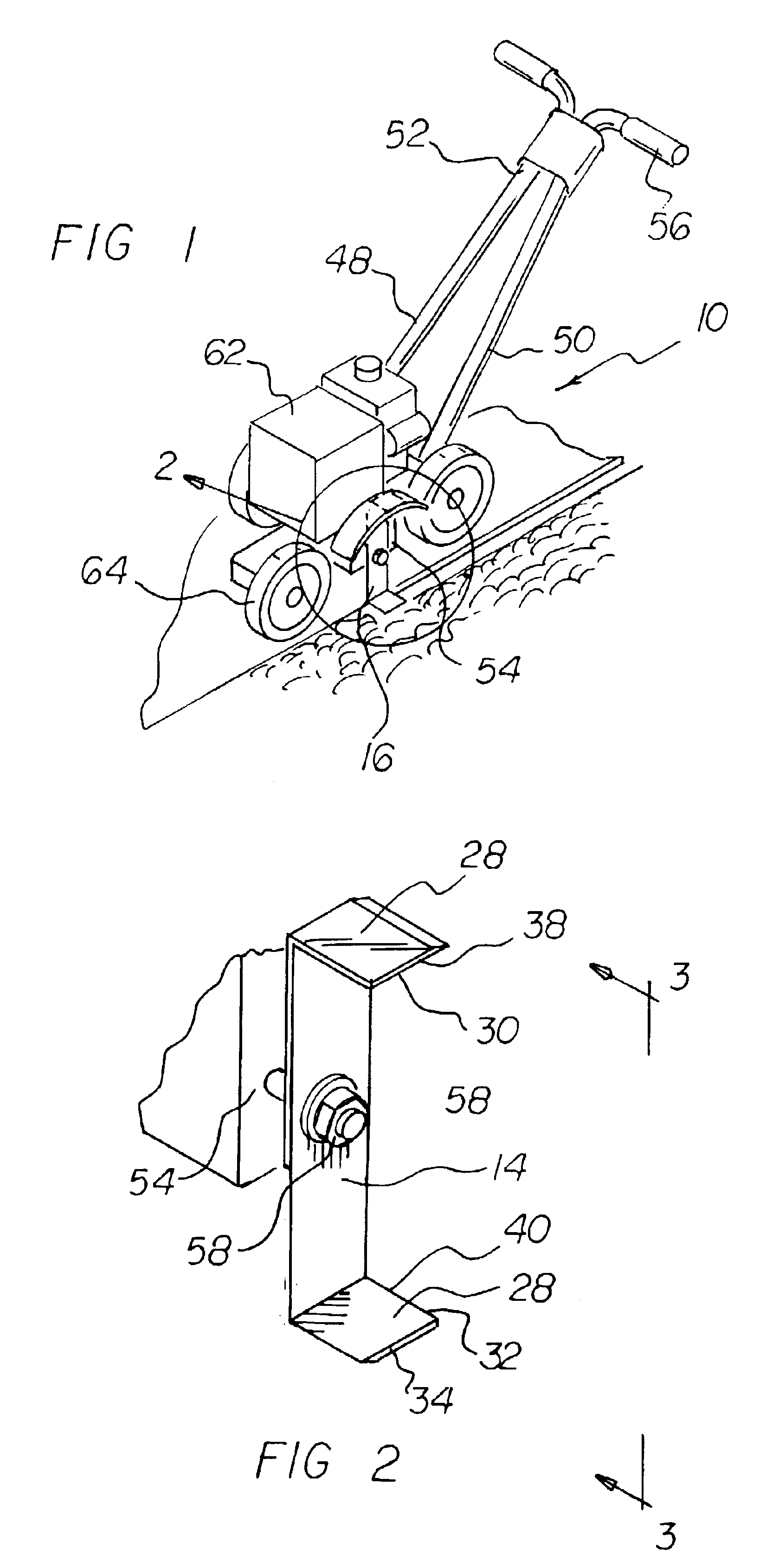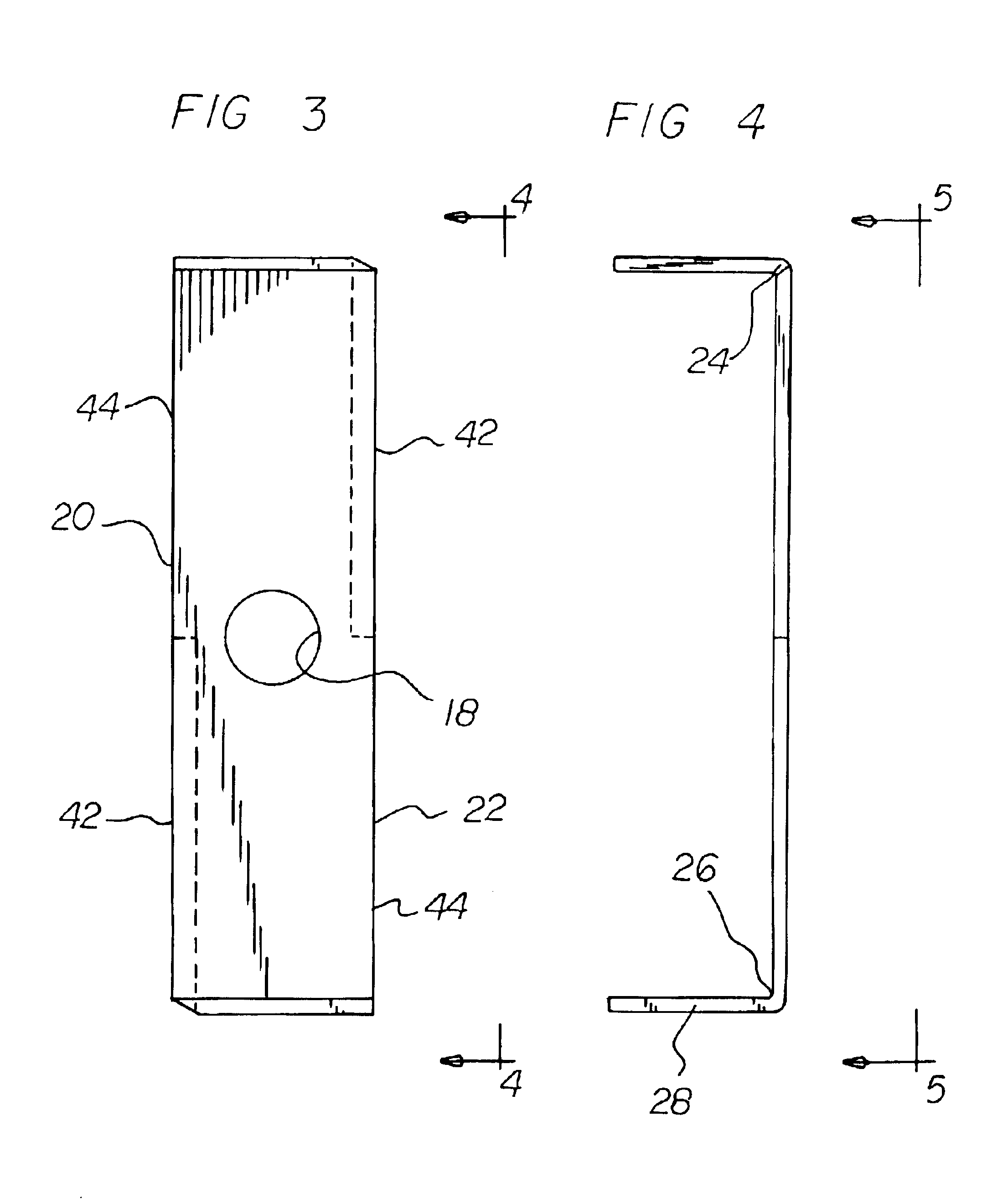Rotary edging blade system
dging blade technology, which is applied in the field of rotary edging blade systems, can solve the problems of not describing a rotary edging blade system that allows safely and efficiently edging flower beds, and achieves the effects of low manufacturing cost, convenient and efficient manufacturing and marketing, and durable and reliable construction
- Summary
- Abstract
- Description
- Claims
- Application Information
AI Technical Summary
Benefits of technology
Problems solved by technology
Method used
Image
Examples
Embodiment Construction
With reference now to the drawings, and in particular to Figure 1 thereof, the preferred embodiment of the new and improved rotary edging blade system embodying the principles and concepts of the present invention and generally designated by the reference numeral 10 will be described.
The present invention, the rotary edging blade system 10 is comprised of a plurality of components. Such components in their broadest context include a blade and a horizontal cutting edge. Such components are individually configured and correlated with respect to each other so as to attain the desired objective.
First provided is a blade 14. The blade is fabricated of stainless steel. The blade is in a plate-like configuration. The blade further has a thickness of about 0.125 inches plus or minus 10 percent. The blade is formed of a vertical segment 16. A central circular aperture 18 is provided through the vertical segment. The diameter of the aperture is about 1 inch plus or minus 10 percent. The cente...
PUM
 Login to View More
Login to View More Abstract
Description
Claims
Application Information
 Login to View More
Login to View More - R&D
- Intellectual Property
- Life Sciences
- Materials
- Tech Scout
- Unparalleled Data Quality
- Higher Quality Content
- 60% Fewer Hallucinations
Browse by: Latest US Patents, China's latest patents, Technical Efficacy Thesaurus, Application Domain, Technology Topic, Popular Technical Reports.
© 2025 PatSnap. All rights reserved.Legal|Privacy policy|Modern Slavery Act Transparency Statement|Sitemap|About US| Contact US: help@patsnap.com



